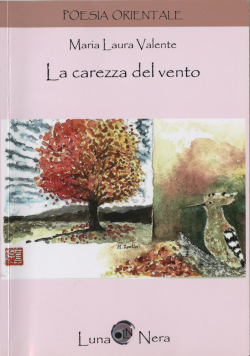Editorial
by Francesca Del Moro
Since time immemorial, animals have been exploited and brutalised by human beings. Sometimes, they rise up against their tyrants, eventually killing them. Drawing inspiration from the book by Patricia Highsmith, this selection of poems stages violence with a harsh, blunt language and adopts the perspective of animals, who are thinking creatures just like humans. In Circus, Sofia Nadalin chooses to avoid the fiercest scenes to linger on the grand entrance of the main character from the first story of the book, the elephant Chorus Girl. The vivid and visionary verses by Alessandro Silva transport us into the mind of a female dog who, after killing his master with a bite to the neck, feels ready to die in peace. A bitch is also the protagonist of the poem by Giovanna Olivari, in which the animal tells about how she killed her ‘rival’ who had been tyrannising her because she was jealous of the loving relationship between the dog and her master. The voice of some unspecified animals blows up in the verses by Alfonso Tramontano Guerritore, to perfect the details of an uprising against human beings in order to punish them for all their crimes, according to the law of retaliation.
Dog Breath
by Alessandro Silva
Eventually she lied down on the ground. The carpet,
metal stars and cherry wood furniture.
The smell of urine and disinfectant.
She wanted to break his bones or spine,
he who had taken her thoughts away but
she nourished the burning of old age in her mouth.
She could feel the cry in his eyes when she
made him fall down and broke his throat, as old
as his hair, shining with a bony, lunar pallor.
The glass windows, closed dreams.
With her nose on the ground of the living
room, she found a spring pain.
She drank all the water in the bowl, remembering the red teeth.
She let herself be washed, burning with life and
life had its own smell, not the one of urine.
Eventually she lied down on the ground. That was the end.
Circus
by Sofia Nadalin
They fired Bob
The sword swallower
They shot Horny
The zebra
My livery isn’t silver and stinks
Of red alcohol
And dung
They cue the mechanical
Music
My entrance is nice
I crunch some scraps
Of Django
The Monkey
I have a relationship with the sky every time I disobey
Let me introduce myself
I am a beast of business
But I tell you: it’s Paradise!
The rival
by Giovanna Olivari
My paws
high
against her soft chest
she oscillated – pretended – surrendered.
A greeting – you told her –
a little too passionate
a little too wild
pooch pooch pooch
you used to hug me
you were all to myself.
She hated
all that petting
all that snogging
you alone with me
a bitch
just a bitch – she used to say –
And she yanked
she pulled with fury
my leash choking me
– no, I am not mistaken –
when you couldn’t see
when you couldn’t do
nothing for me.
You betrayed her – she said –
my collar
still in her hands
my leash between her legs
now down the stairs
– no, it’s not a blunder –
and on her chubby body
– not a scream
not a single drop of blood -
I wait for you and trust
you will be
now all to myself.
It’s raining at the right time
by Alfonso Tramontano Guerritore
It’s raining at the right time
or it must be night
because of the surprise: actually
no man at this point in the story
can ever expect
to find himself surrounded
by an army of little fighting vehicles
moving all at once
a shiny black darkness that cannot be seen
So, without thinking about the fairest revenge
deprived of freedom and of all form of respect
we won’t lack the courage
to finish off a despicable enemy
way much bigger and even
clever
but so much used to evil
that he faints with fear
he doesn’t understand
the words of a pack leader
a wolf or a bird
speaking suddenly and it’s not a dream
it’s not a fairy-tale
The simple explanation
is revenge, one for all
in a row, eye for an eye
a capital punishment
on one side the man, on the other
a group swarm flock
headed by a revolutionised animal
who can’t take it anymore
La carezza del vento
by Maria Laura Valente
The caress of the wind referred to in the title is the shiver we feel after reading the 50 haiku collected in this book by Maria Laura Valente, an internationally acknowledged expert in this genre. This work itself is an international project, with each poem presented in Italian and translated into four languages: Japanese, English, French and Russian. Generally conforming to the traditional scheme (5, 7 and 5 on in Japanese and lines of 5, 7 and 5 syllables with the accent on the penultimate syllable in Italian), the book alternates poems written with the technique of toriawase, namely the union of two elements lacking any logical connection which nevertheless conveys a sense of harmony, and the more difficult ichibutsujitate technique which focuses on a single image and then explores its details. In both cases, the leap of logic (kiru) is most often marked by the punctuation mark of the n-dash. In accordance with tradition, many of the haiku in this collection refer to a season (kigo), either explicitly naming it (winter sea; autumn evening) or indirectly evoking it through an atmospheric event (the first snowflakes; the last snowflakes) and more often through elements belonging to the plant kingdom (fallen leaf; cherry blossom). Sticking to such norms, Maria Laura develops her original style in a book which may be interpreted as an existential journey on the one side and enjoyed as a series of paintings on the other. The visual synthesis of these haiku is very effective: a few brushstrokes are enough to offer us a vivid image which often strikes us with impressive details. The reader has the feeling—especially in the first poems of the collection—to be in the presence of some impressionist works (the shadow of a lighthouse melted into the sunset, the scattered fragments of a full moon in dark water) or in front of a painting by Van Gogh (deep green – / a magnolia flower / captures the sun) until the predominance of visual aspects gradually makes room for tactile sensations (orange peel – / an unexpected hug / from my father) and most of all auditory sensations (the robin’s chirping; my mother’s voice; the voice of the rain; the sound of the waves; children’s laughter; my child’s cry). Skilfully sewn up through embroideries of recurring key words—often echoing each other from one poem to the following one—these haiku flash through the entire journey of existence: the book begins with a road and a reference to childhood and ends with the fine death of sarasoju, a flower which is born in the morning and falls in one piece in the evening. The journey takes place between these two ends, either explicitly mentioned or hinted at through other references, such as the “long road” and the highway. The natural landscape—with rare urban sketches—is dominated by the bloom of flowers, the gentle changing of seasons and atmospheric events and is often pervaded by a sense of calm contemplation. But this is not an idyllic dream: there are references to the cold, which is also a temperature of the soul, and to the shadow which—in the words of Goethe—is deeper where there is much light. Not only is the shadow directly named as a silent companion during the journey—possibly, the traveller’s dark side—but it lies hidden in the references to the orphanage, the graveyard, the black ivy of memory clinging to the heart, the mother’s voice weakening, the convalescence. In these very short lines which are nevertheless so intense that they open up entire worlds, Maria Laura doesn’t overlook any aspect of life—the relationship with her parents, pregnancy, nostalgia for her lost ones—and prove to excellently handle this ancient genre which is still cherished and widely practiced all over the world.
Maria Laura Valente
La carezza del vento
Associazione Culturale LunaNera, 2018

